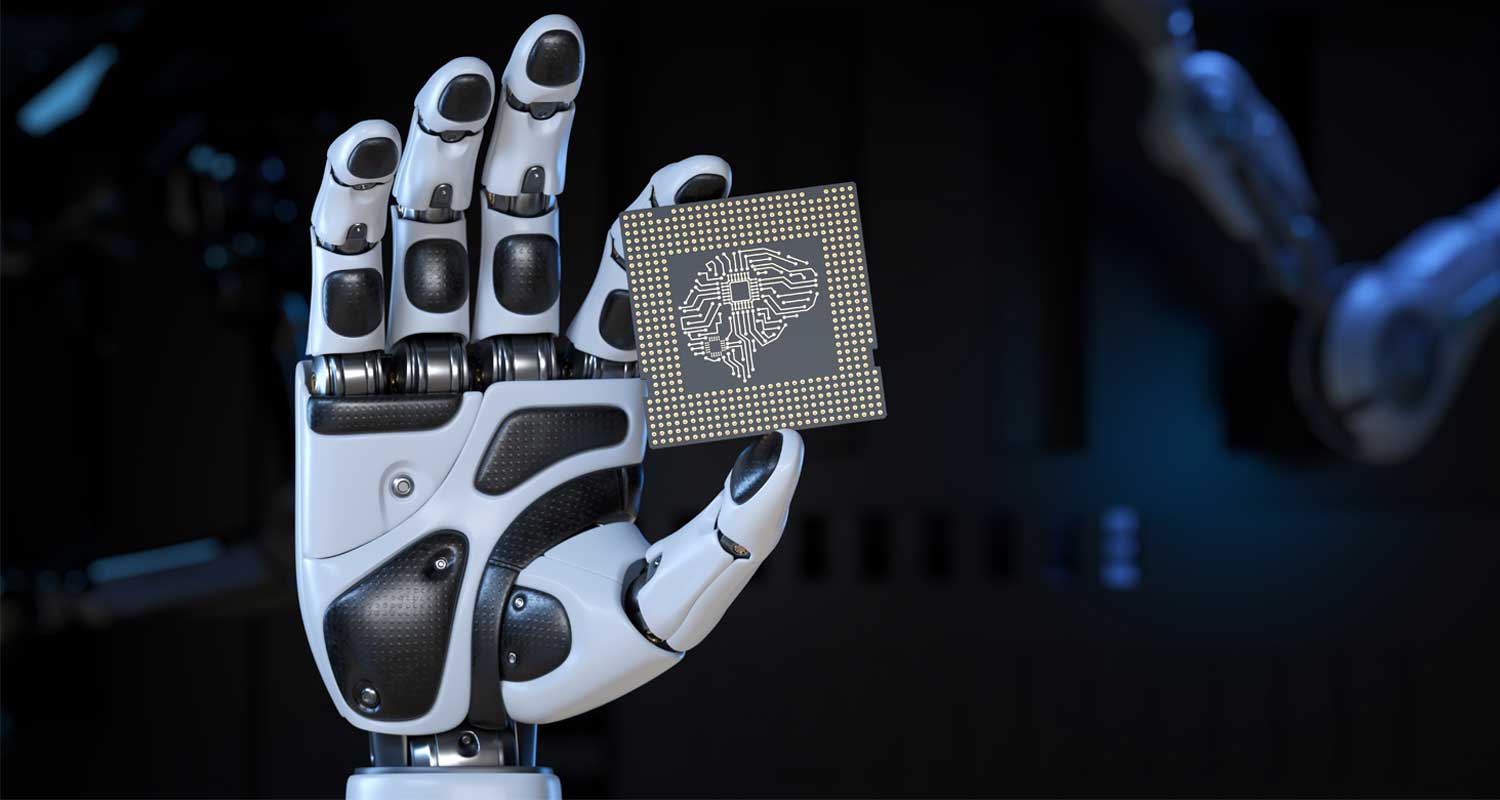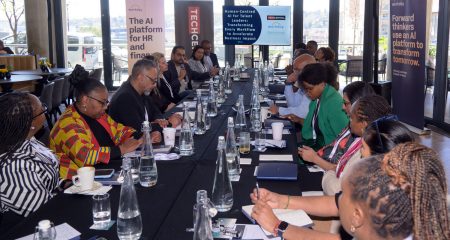 The arrival of generative artificial intelligence has dominated the AI conversation, most notably with the introduction of consumer products such as ChatGPT. This has made the world focus on AI in a way it hasn’t before.
The arrival of generative artificial intelligence has dominated the AI conversation, most notably with the introduction of consumer products such as ChatGPT. This has made the world focus on AI in a way it hasn’t before.
“At Workday, we’ve been building to this moment for years, and have been developing AI applications since 2013,” said Sayan Chakraborty, co-president of Workday, who was presenting a keynote address at the company’s annual Workday Rising event in Barcelona this week.
Chakraborty said Workday built its underlying technology in a way that allows it to adapt quickly to change, to protect customer data and to meet regulatory requirements, even as those requirements are changing.
“This means we can harness the power of AI and ML (machine learning) throughout our platform and help you tap into that value. Many of you already know about and use our AI built into the products and you’re gaining the benefits of those every day,” he said.
“We’ve delivered dozens of use cases, including suggested skills for workers’ job profiles, anomaly detection and financial journal lines, and recommendations for learning courses. There are more than 40 in production, and more are constantly on the way – in fact, on average, we process more than 58 million inferences per day on our ML platform.”
Large language models
Chakraborty said that at its core, generative AI relies on a technology called large language models (LLMs), and like all AI uses massive amounts of data to determine patterns using vast amounts of computing power to predict what is most likely to come next, based on those patterns.
“These predictions can be highly accurate, and the power of these models has produced unexpected results. They can produce content – documents, text, music – and summarise it. They can also have a conversation that feels natural. It’s unlike previous AI-powered assistants, and that makes this a fundamental shift in technology. This is truly a moment that has a before and after.”
He said it’s just like other technology revolutions that have gone before it: the smartphone, cloud computing and the internet. “This is one of those epic transitions, and as we think about this transition, it’s critical that we understand the two vastly different approaches to leveraging this technology.”
The first are LLMs with billions or even trillions of parameters like ChatGPT, which are trained on huge amounts of data scraped from the internet. “These are built in this opaque way, where we don’t fully know what went into training and fine-tuning these models. Inevitably because of the data used, these models reflect all the good and bad of the internet, because the internet is this great place where you get a lot of interesting things done, but it’s also a dark place full of disinformation.”
 Chakraborty said this shows why internet-trained LLMs have risks that are real and daunting. “Some of these risks include bias and incorrect results, which are sometimes referred to as ‘hallucinations’. The use of these models for misinformation or in cyberattacks is also a real problem. Then there’s the environmental impact of the massive amounts of compute required by these models.”
Chakraborty said this shows why internet-trained LLMs have risks that are real and daunting. “Some of these risks include bias and incorrect results, which are sometimes referred to as ‘hallucinations’. The use of these models for misinformation or in cyberattacks is also a real problem. Then there’s the environmental impact of the massive amounts of compute required by these models.”
Unfortunately, he said, at least so far, the approaches designed to address these risks have fallen short. “But the technology does not always have to be used this way, which brings me to the second type of LLMs. What we use at Workday is what we refer to as enterprise LLMs. These depend on high-quality data that already has strong regulatory compliance, privacy, security and IP ownership built in. In this way, when we’re training these models, we know where the data comes from.
“We know who owns it, and we know where there may be concerns about specific use cases. We can use methods like ‘grounding’ to ensure that these models provide truth, allowing users to tap into the benefits of LLMs without exposing them or their employees to the dangers in these internet trained LLMs.”
Adaptability is key
In short, Workday is ready, he said. “We’ve been building an ML platform designed to bring in and apply new technologies as they become available, and then scale those benefits across all our products, whether that’s human capital management or financials, so we can deliver more value to you our customers quickly and efficiently. This adaptability is critical, because people need to realise the technology we’re deploying today didn’t exist six months ago, and it won’t be the same six months from now.”
It is this platform, combined with Workday’s single data model, the company’s comprehensive security model and its single code base, that allows the company to effectively leverage generative AI, Chakraborty said.
“It’s the quality of the data that enables us and our customers to use these technologies safely. At Workday, we’re used to requiring high-quality, safe use of data. You can’t be semi-accurate when you run payroll; you need payroll to be correct. There’s no place for hallucinations. Similarly, you can’t be semi-accurate when you’re adding to your general ledger or doing a financial close. We treat our AI models the same way we treat everything at Workday: with precision and accuracy. We require high-quality data so that we can generate high-quality content and recommendations – and we work constantly to mitigate the risks.”

Chakraborty said Workday has adopted the same thoughtful, secure and responsible approach that it uses with all its technology innovation. “At Workday, we place the highest standards on ourselves to ensure that we use technology ethically and responsibly to meet the standards customers want us to have. We put humans at the centre of our software, which has been the heart of this company from our very founding.”
This, he said, will continue with generative AI. “We believe humans should be at the centre of this technology and they should be in the driver’s seat. While we need to be knowledgeable and thoughtful about the risks here, you can be assured that Workday’s approach to generative AI is meant to enable you to gain the benefits of this technology, which are exciting and are considerable, and still protect you from the dangers.”
A look at the benefits
He said if the industry can enable generative AI safely, it opens fantastic new opportunities.
“It can allow you and your employees to be your best selves at work, to spend less time working through mundane paths and getting to what you actually want and need to do. With any new technology, there’s a little bit of hype, but there’s also incredible value here – and we will deliver that value.
“Wouldn’t it be amazing if Workday could save you time by writing a job description for you? Or give you time back in your day by creating a knowledge-based article for you? Or if we could read and summarise every one of your customer contracts so you can understand where, or if, you should have areas of concern, and do it in a safe and a trustworthy manner?”
This could be taken a step farther, Chakraborty said. “What if you could get basic employee information just by asking a simple question, and it could also help you understand a complicated issue such as what’s behind the revenue trends of your business? What if you could build an entire application on Workday extend just by imagining it out loud?”
He said this is what Workday is introducing at Workday Rising, and attendees had the opportunity not only to imagine how great this could be, but to see it action.
- Read more articles by Workday on TechCentral
- This promoted content was paid for by the party concerned




